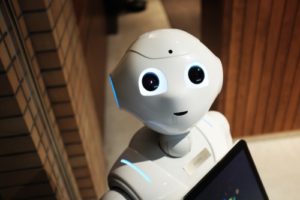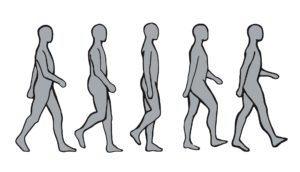 Dr. Marko Popovic, professor of Physics, Robotics, and Biomedical Engineering and the author of Biomechanics and Robotics, runs Popovic Labs at Worcester Polytechnic Institute in Massachusetts. He and his students use biological designs to help them build mechanical systems. At the same time, they use what they learn trying to design mechanical systems to better understand biological ones. It is a reciprocal relationship that provides a unique insight into what many of us simply take for granted—our movement.
Dr. Marko Popovic, professor of Physics, Robotics, and Biomedical Engineering and the author of Biomechanics and Robotics, runs Popovic Labs at Worcester Polytechnic Institute in Massachusetts. He and his students use biological designs to help them build mechanical systems. At the same time, they use what they learn trying to design mechanical systems to better understand biological ones. It is a reciprocal relationship that provides a unique insight into what many of us simply take for granted—our movement.
Consider something you do every day without a second thought: walking. Although you never have to think about a single step, it is no simple task. In a nutshell, walking is actually controlled falling. When you take a step you shift your center of gravity forward, initiating a forward tip of your body. As you fall your front leg kicks out and—thanks to complex coordination between the brain, muscles, and various sensory organs—catches you. After successfully landing on the forward leg, the process is immediately started again. This repetitive movement—tip, kick, land, tip, kick, land—is known in biomechanical terms as gait.

Balance And Stability Makes It Work
What makes gait work is the bodies’ innate ability to maintain balance and stability at all times. As you walk through space, shifting your weight as you go, the body is constantly realigning itself, catching you before you end up face down in the dirt. It is a bit like those cartoon sketches in which someone is holding a stack of 100 dinner plates above their head, constantly running from side to side in order to stay under them.
If this natural process is impaired, the body must compensate for the problem and that is where Dr. Popovic’s work comes in. “If you are missing the upper arm, for example,” Popovic explains, “this is a big problem for balance and stability.” The missing weight of the limb creates an instability that the body must bring back into balance, somehow. The resulting compensation may lead to abnormal movement, such as an exaggerated swing of one side or a limp. Abnormal movements, though, have a downside. They can add extra stress on muscles and joints which, down the line, can set the stage for injuries, chronic pain, or arthritis.
One of the things Popovic and his team does is help people avoid such problems by designing and creating devices that restore natural movement as closely as possible. The results are some very futuristic devices such as the Shoulder Control Movement Gyroscope. The SCMG is a prosthesis meant to assist those who have lost an upper arm. The device fits over the shoulder, taking the place of the missing arm, but as more than just dead weight. Through the use of a mechanical device called an actuator, which produces motion that can be used to control a mechanism or a system, the SCMG not only adds the weight of the missing limb, it also replicates the swinging motion that would occur naturally during an activity like walking.
Another particularly sci-fi project is the Thoughts Controlled Accurate Prosthetic Hand. This prosthesis, which is built to specifications borrowed from physiological features of real hands, is controlled through EEG, which is a device that scans brainwaves. In this case, the machine is programmed to recognize three distinct thoughts which in turn produce three distinct actions in the artificial hand, all based on how a real hand would work.
It’s All About How You Move
While devices like the SCMG or a thought controlled robotic hand seem like sci-fi novelties, they highlight something very important for everyone. Human movement is a complex, yet well-designed and well-balanced phenomenon. When the body is unable to move according to that design, there are repercussions such as decreased strength and performance as well as higher risk for pain and injury. In fact, many of the aches and pains in the low back, shoulder, knee, and neck that are so ubiquitous in our society stem from the same basic problem that we see with a lost limb. Prolonged periods of inactivity, especially in one position such as sitting, stiffen the body and reduce free motion. The resulting impairments may be less dramatic than a missing body part, but the effects add up over time and can lead to the same result.
This is important to understand now, more than ever. As people live longer, their bodies’ physical abilities will need to last longer too. Preventing wear and tear can keep people healthy and engaged with the world, while also reducing the need for therapies such as joint replacements or other orthopedic interventions. This is why movement specialists like physical therapists, athletic trainers, and even some personal trainers can be helpful. These professionals specialize in restoring and maintaing natural, balanced movement because it reduces the kind of stresses that come from dysfunctional movement. As we all live longer than ever, we will need to invest in maintaining the quality of the vehicle that gets us around—our body.
